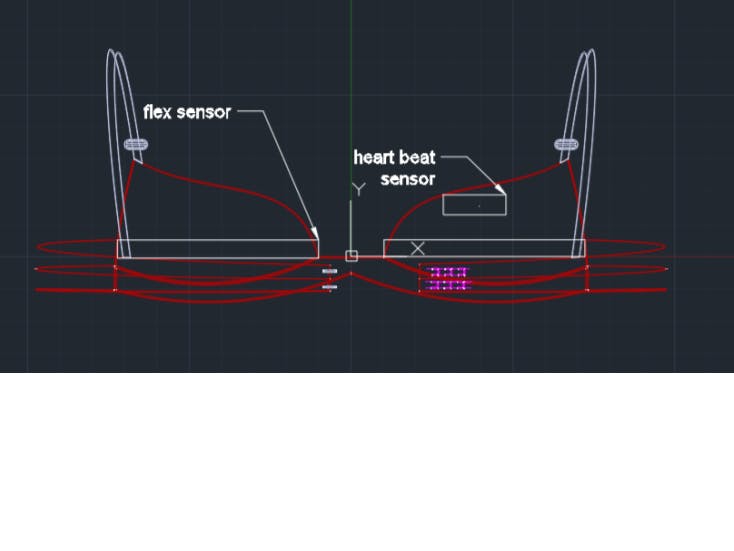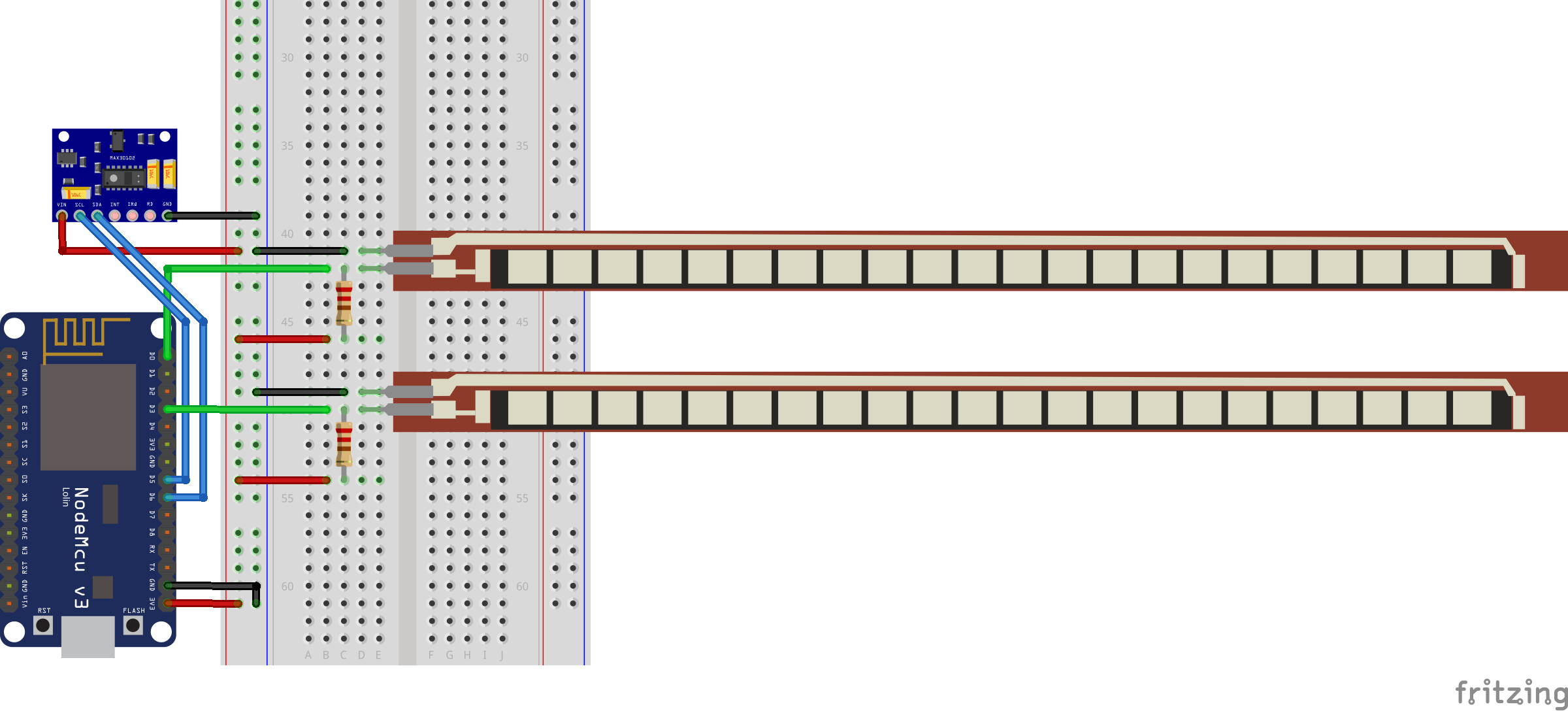A brassiere is one of the most important parts of a woman's life. This product will make the lives of women going through menopause easier by keeping track of their vitals and understanding the needs of their bodies.
This product solves the problem of irregular periods, hot flashes, and detects certain future health problems in advance with the help of sensors fixed in the bra. There is not enough data on menopause and we will also be able to store data (with permission) for research in the field of the same.
This is a bra that provides more than just support!
The Hardware:
The Smart Bra consists of sensors embedded in the fabric that will keep track of important vitals. The bra currently monitors the heart rate, the body temperature, the cup size of the breast, and the respiration rate. Due to the Covid-19 lockdown, purchasing the components was not possible. Therefore, The MAX30102(heart rate and temperature sensor) was simulated using Proteus.
The flex sensor was made at home by following this existing project: https://www.hackster.io/SHAHIR_nasar/simple-homemade-flex-sensor-ff54f0
The flex sensors will be placed horizontally across each breast to monitor the cup size. The cup size of a woman increases right before the menstruation period. Based on existing research we know that the heart rate of the average woman is lower in the follicular phase and the body temperature is lower during ovulation. The respiration rate is also slower at the beginning of the cycle. These factors will help predict the exact date (and time after enough data is collected) of your period.
The heart rate sensor will be placed on top of the left breast for the best readings.
The app will have three main features:
Devices: It allows other smart appliances and devices to sync with the app and perform certain tasks. Uses include being able to sync your Air Conditioner or thermostat to your app. In that way, every time you are about to have a hot flash or night sweat, the AC will turn on or adjust the temperature automatically.
Health: keep track of your vitals. It will also be able to use predictive models to warn the users of any possible health scares.
Calendar: It will predict your next menstrual period and keep track of your cycle.










Comments
Please log in or sign up to comment.